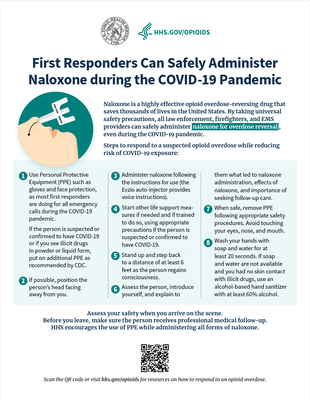SIGNS OF AN OPIOID OVERDOSE
You should administer naloxone when you observe the following symptoms in an individual:
- unconsciousness
- very small pupils
- slow or shallow breathing
- vomiting
- an inability to speak
- faint heartbeat
- limp arms and legs
- pale skin
- purple lips and fingernails
If you suspect an overdose based on the above symptoms, administer naloxone and call 911 immediately.
WHAT IS NALOXONE?Naloxone is a medicine that immediately reverses an opioid overdose while it is occurring by attaching to the individual's opioid receptors and blocking the effects of any consumed opioids.
Naloxone restores breathing and has no negative effects on someone who has not consumed opioids, meaning it is safer to administer naloxone than not to when you are not sure whether an overdose is occurring. (The name of some opioids include heroin, fentanyl, oxycodone, hydrocodone, codeine, and morphine.) |
HOW TO ADMINISTER
Submit a Tewa Roots Society Narcan Training Request to receive an in-person training.
There are a couple of different ways to administer Naloxone, including:
For in-depth steps to responding to an overdose, view the Substance Abuse and Mental Health Administration's Opioid Overdose Prevention Toolkit.
- Nasal Spray
- Injection (into the muscle, veins, or under the skin)
For in-depth steps to responding to an overdose, view the Substance Abuse and Mental Health Administration's Opioid Overdose Prevention Toolkit.
NIDA. 2022, January 11. Naloxone DrugFacts. Retrieved from https://nida.nih.gov/publications/drugfacts/naloxone on 2023, September 15
Services |
CompanyAbout Us
Contact Us |


